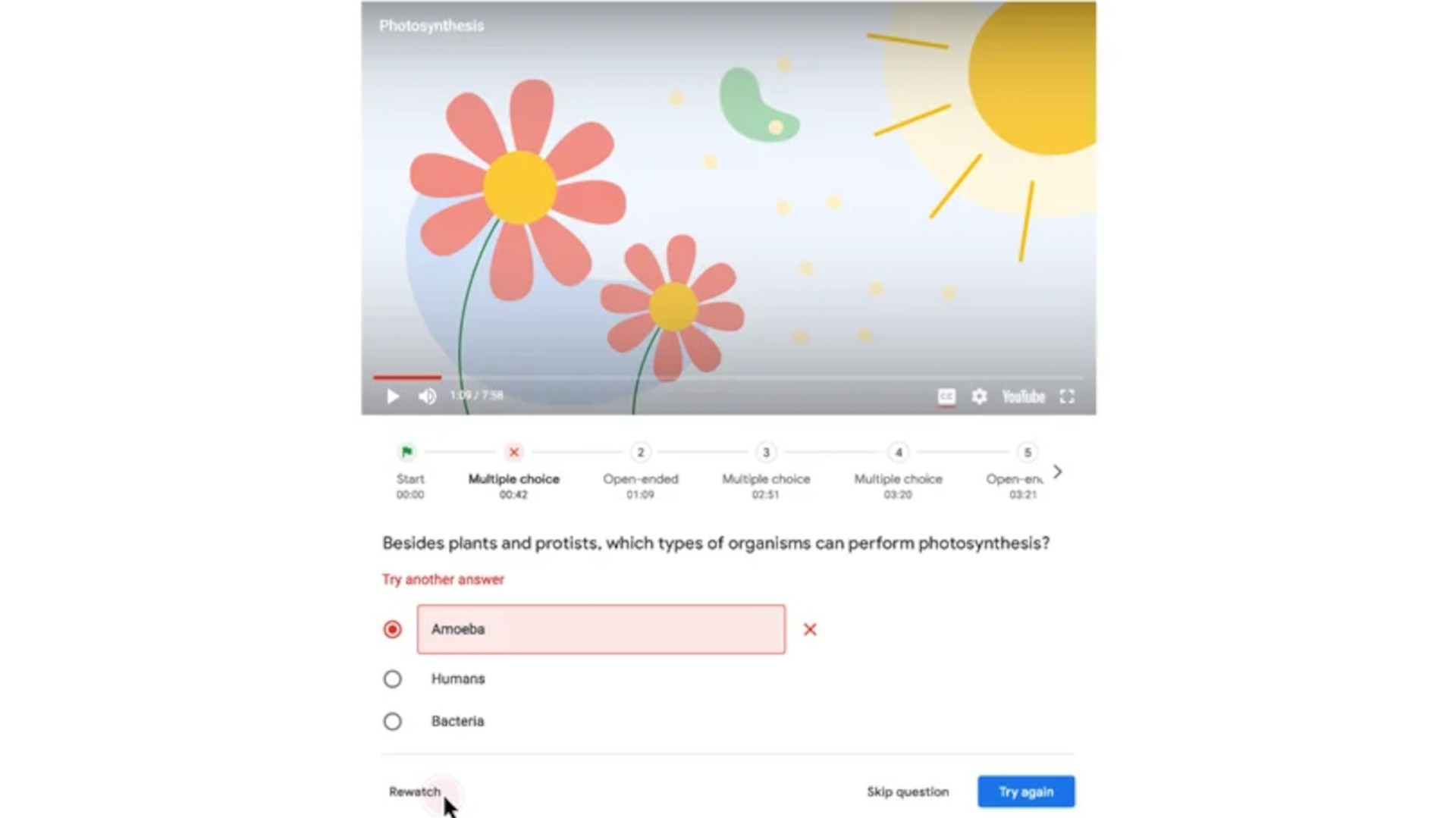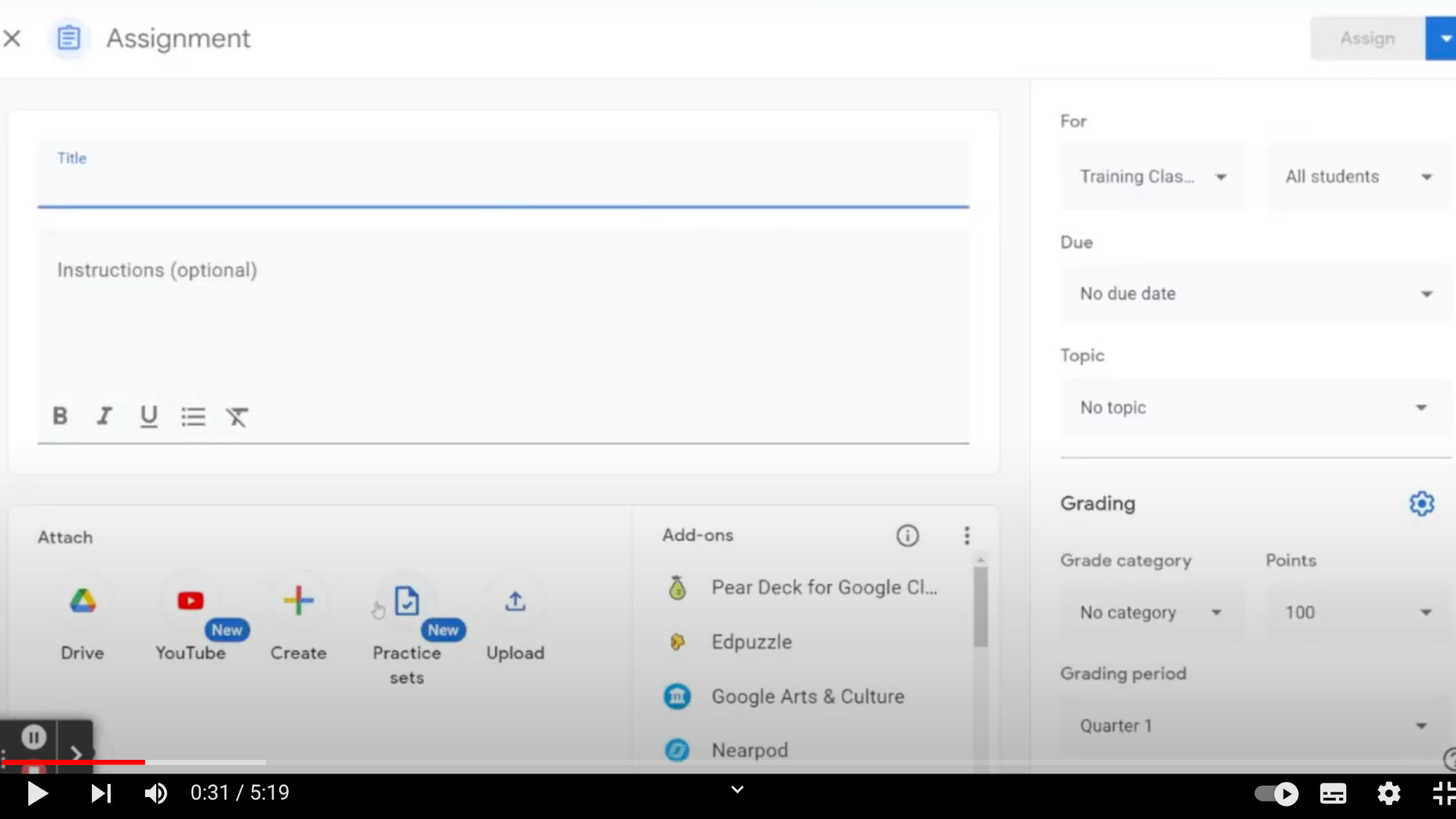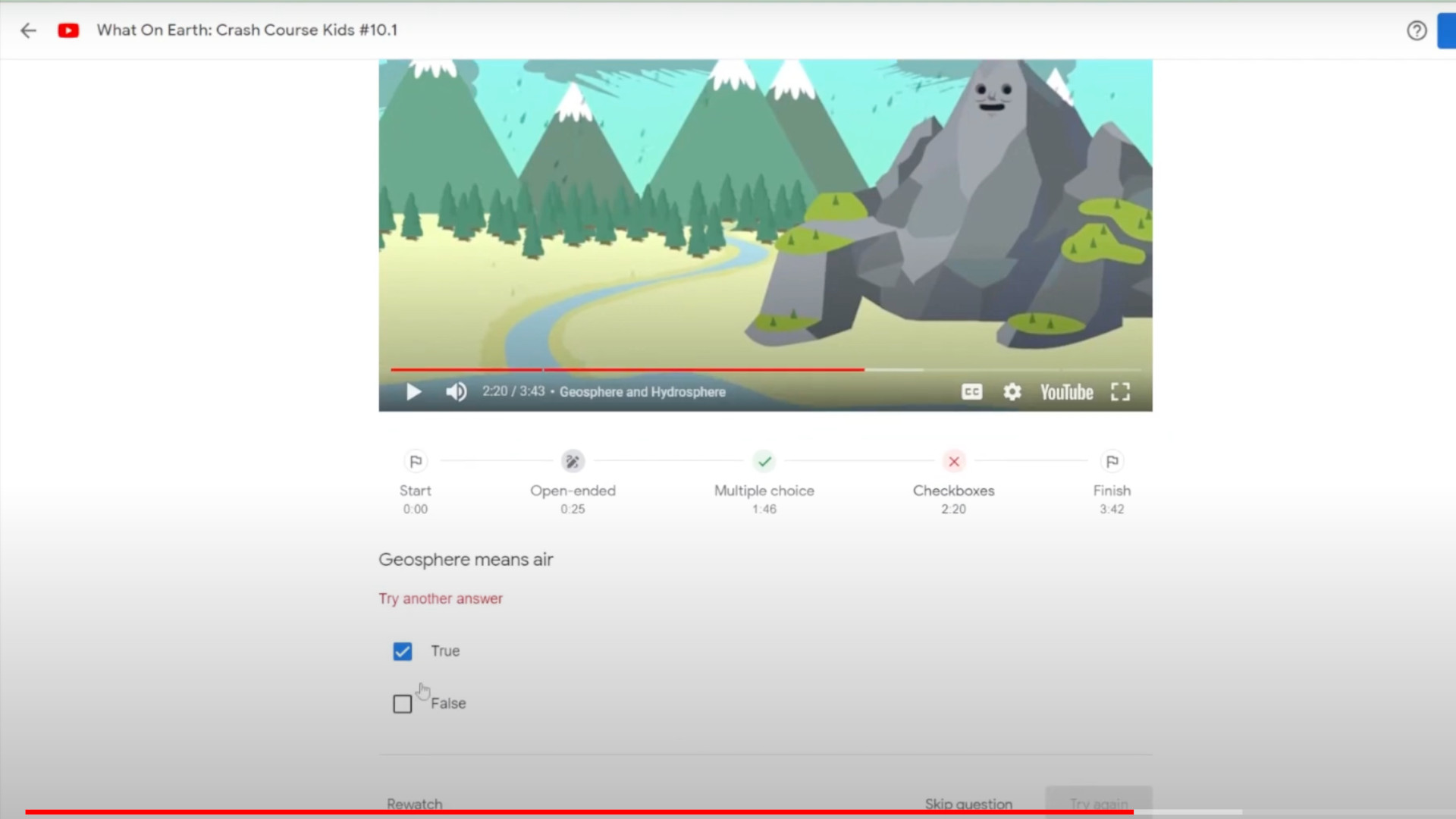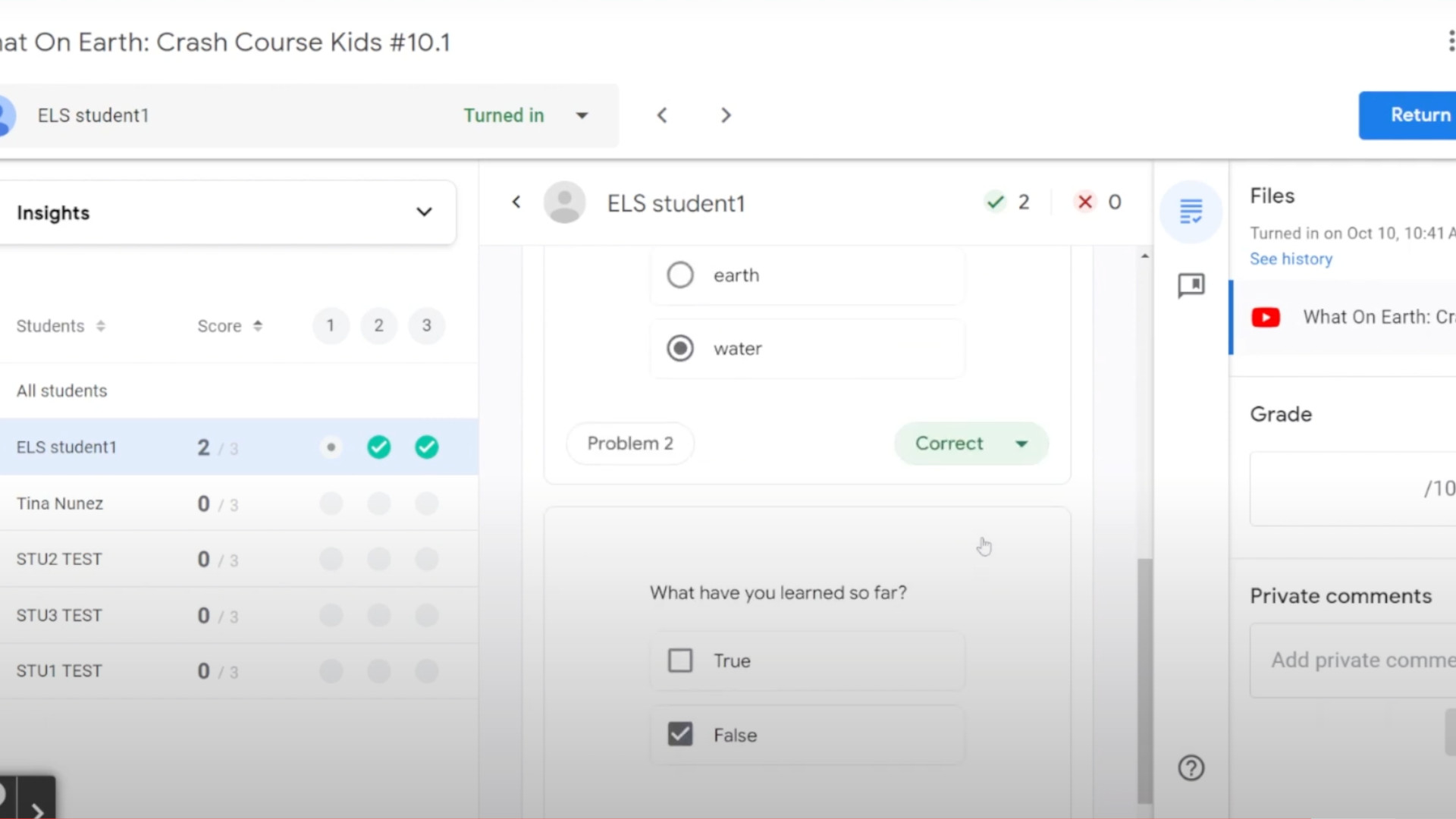How to Add Interactive YouTube Videos to Google Classroom
Find out how to use interactive YouTube to help your class engage more with educational videos

Want to make interactive YouTube videos in Google Classroom? Or perhaps this is your first time hearing this is an option. Either way, you're in the right place to get a step-by-step guide on exactly how you can make YouTube videos interactive for your classroom.
To be clear, this is going to show you how to take already published YouTube videos -- perhaps one that offers a guide to space for example -- and add questions for students to answer at certain points during the video.
Since this can all be done right there within Google Classroom, it can make for a really straightforward way to set assignments and to grade in your usual digital space.
Here is everything you need to know about how to create your own interactive YouTube videos in Google Classroom.
Start Your Interactive YouTube Video Assignment

Primarily, you'll need to be signed into Google Classroom, and then it's time to get setup by using the Classroom in which you want to work. Then select the Classwork tab, and from there the Create button and select Assignment.
You can then look to the bottom of the page to select the YouTube icon. This will take you into a pop-up window with a tab at the top that reads My video activities so you can use this service.
Now select the Search video tab and type in the search for the video you want to make interactive. Pick the video you want. While you can simply add this video you'll want to select the Add questions icon at the bottom right.
Tools and ideas to transform education. Sign up below.
How To Add Questions To A YouTube Video

Now you will be in a window with the video front and center where you can click play to get it started. Once you find a point where you want to add a question, perhaps on a certain topic that needs reviewing, you can pause and then scroll down to hit the Add icon below. You can then choose from multiple choice, checkboxes, or open-ended questions types as you see fit.
For open-ended, type in the question and select save and continue. This is the only sort that won't auto grade for you.
With checkboxes you can type the question and then enter the answer options with as many or as few as you need, before making sure to select the correct answer, and then hitting the save and continue option.
Go for multiple-choice and it's much the same, pausing and adding a question. Then add in possible answers -- as many as you need -- and select which is correct before hitting save and continue. This is a good way to offer True or False answer options.
Then select the view as a student icon at the top to see how it looks in a preview. When you're satisfied, you can select the Attach icon at the top. That's now part of the assignment where you can add details such as a title, due date, and so on as you would with any other assignment.
How Students Access The Assignment

Your students will be able to access these assignments as they would any other in Classroom, and can then work their way through the video answering the questions as they go. This will auto pause at the correct points and won't continue until they have submitted their answers.
This uses self checking for multiple-choice and checkboxes, in which they will be asked to try again if they make the wrong choice -- offering a practice to mastery style of learning. Only the open-ended questions need to be submitted for a teacher to assess.
Usefully, students get a summary of their answers at the end, at which point they can turn in the assignment.
How To Assess Interactive YouTube Videos Submissions
To get into the data available on these assignments you can select the Class Insights drop-down and you will be given a layout of all the work submitted. Select an individual student to see correct answers and to grade those that need your attention.
To grade, select the ungraded drop-down and pick correct or incorrect before giving them a total score on the right-side box. You can also make private comments here for feedback before hitting the Return button at the top right.
Usefully, you can also look by problem to see how everyone in the class has done on that one issue. Helpfully, you will also have data on most frequently missed questions, or best questions -- as examples -- which can be really helpful for at-a-glance feedback on how they're doing.
Luke Edwards is a freelance writer and editor with more than two decades of experience covering tech, science, and health. He writes for many publications covering health tech, software and apps, digital teaching tools, VPNs, TV, audio, smart home, antivirus, broadband, smartphones, cars and much more.
